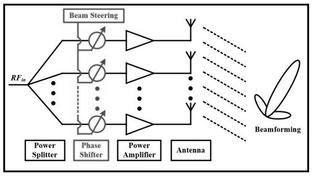Understanding the PDH Frame Structure: 2Mbps, 8Mbps, 34Mbps, and 140Mbps
Advertisement
This tutorial covers the PDH frame structure, detailing the 2Mbps, 8 Mbps, 34 Mbps, and 140 Mbps PDH frames, including all their respective fields.
Frame alignment is crucial in PDH and is achieved by inserting a Frame Alignment Signal (FAS) at the beginning and sometimes at the end of the frame. These FAS words aid in synchronization, allowing the receiver to identify the start of each frame. Frame synchronization for 2Mbps is achieved using the FAS word at the start of each odd frame. For higher rate hierarchies, the FAS is located at the beginning of all frames. The fixed binary pattern ‘0011011’ is used as the FAS word.
2.048 Mbps Frame
The multiframe in the 2Mbps rate consists of 16 frames, each containing 32 bytes. The first timeslot is dedicated to control information, and the 16th channel is used for signaling. With a frame period of 125 microseconds, each byte represents 8 bits / 125 microseconds, resulting in a 64 kbps channel. Transmitting 32 such channels yields a rate of approximately 2.048 Mbps.
Key parameters for this PDH frame rate are summarized below:
- Basic Binary rate: 2048kbps +/- 50 ppm
- Line coding: HDB3
- Frame length: 256 bits
- Available bits/slot: 8 bits
- Multiplexing type: Octet Interleaving
- Frame Rate: 8000 frames/sec
- FAS bits rate: 28000bit/sec (without supervision bits)
The 2Mbps frame is the most widely used PDH frame format. Most European networks rely on this frame type. Many narrowband networks are also built upon this foundation. Common networks utilizing this frame include POTS, Frame Relay, N-ISDN, GSM, ATM, and leased lines.
PDH Applications
PDH networks provide circuits to both public and private networks, supporting applications such as POTS, GSM, ISDN, Frame Relay, video, audio, and data.
The 2Mbps frame format is also fundamental in constructing synchronization networks. Furthermore, PDH is employed in test and measurement equipment for both in-service and out-of-service measurements.
 RF
RF

